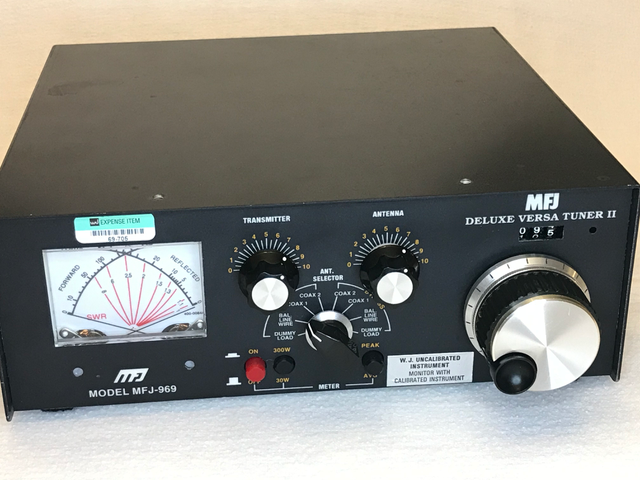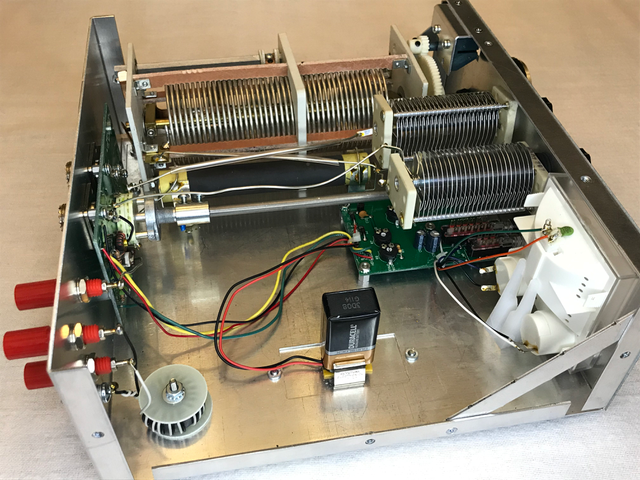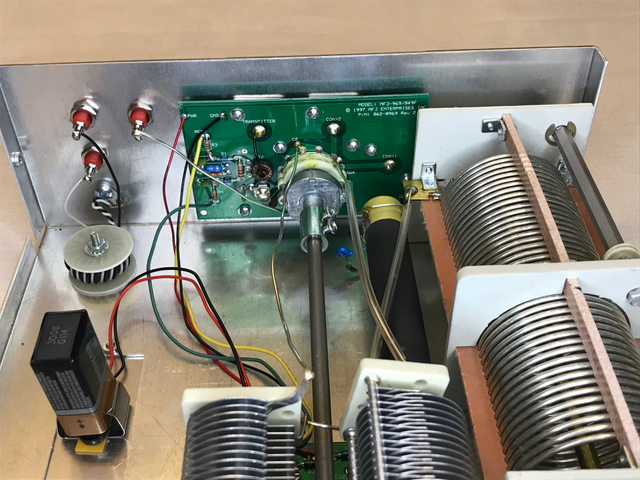MFJ-969 antenna tuner
last updated 2 January 2022
The MFJ-969 is a large T-network antenna tuner with a roller inductor and a cross-needle SWR meter, and is rated for 300W from 160m through 6m.

This particular unit has a pedigree: it appears to have been used in a lab at Watkins-Johnson at some point as an “uncalibrated instrument”. (Watkins-Johnson made some very expensive radio equipment.)

A look inside shows the same 206 pF capacitors as used in the MFJ-949, with the main difference being the roller inductor (and a larger case). The battery is to power the peak-reading meter circuit: the power / SWR meter does not work at all when the front panel switch is off.
There are long wires to the capacitors, which may reduce the efficiency on 6m. However, because the connections between the antenna ports and the switch are more direct, the SWR will be lower in bypass mode on 6m than for many other tuners. The dummy load resistor is just visible in the photo, below the roller inductor and above the extended switch shaft.

This tuner only has two antenna connections to choose between, although either can be fed directly with the tuner bypassed.
To be honest, I don’t like to use this tuner. It may be due to damage to this particular unit before I got it, but the roller inductor is very hard to turn. The knob has a “spinner” finger dimple, but that can’t generate enough torque to rotate it. I have to grasp the knob firmly in my hand to turn it, with my other hand on top of the tuner (and somewhat blocking the meter) to turn it, then I can get about half a turn at a time. If it turned more easily, it would be a lot easier to use.
Despite the roller inductor, the MFJ-969 was only “average” in my tuner efficiency test. It was the best of the T-network tuners on 12m, possibly due to the improved switch connections, but overall was near the middle of the group. One would expect higher efficiency, as the roller inductor should avoid problems with having to use more coil than is optimum.